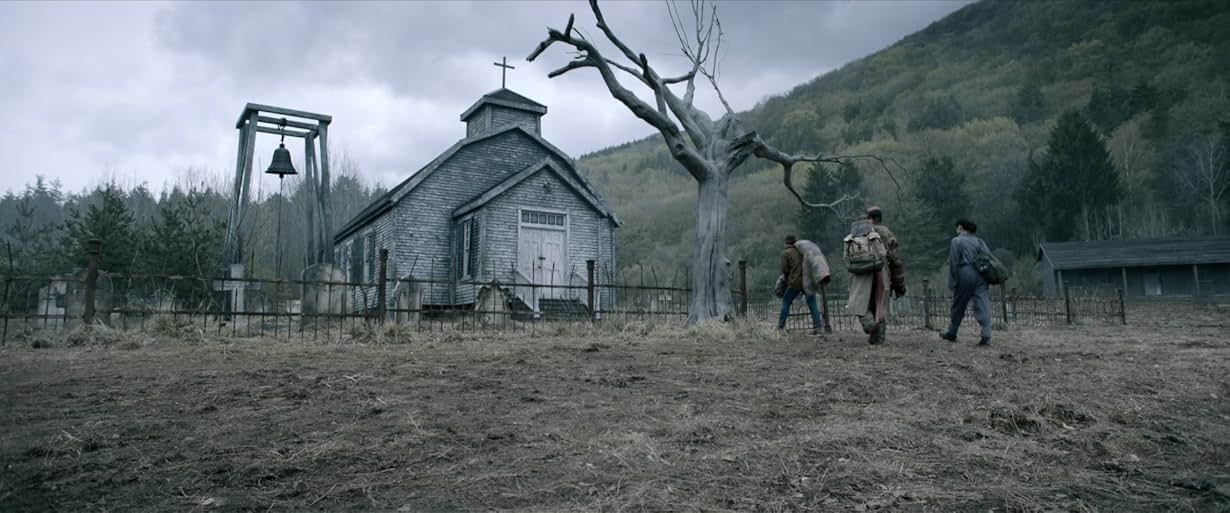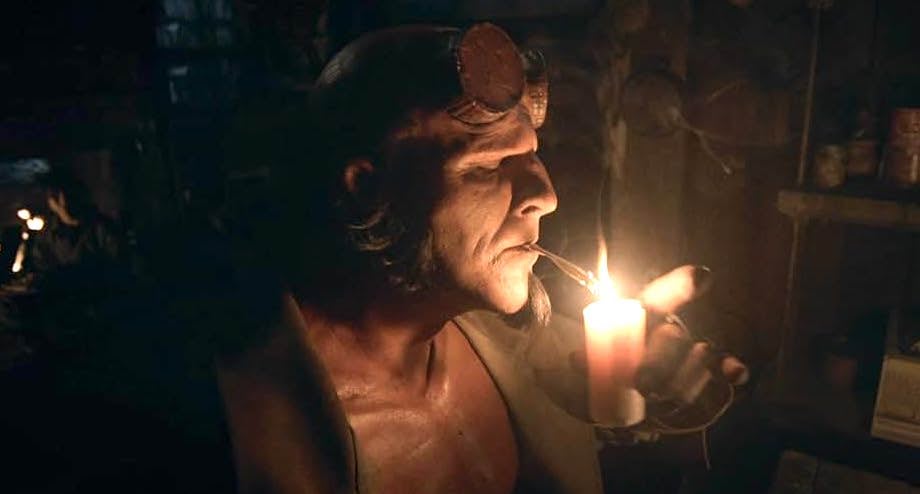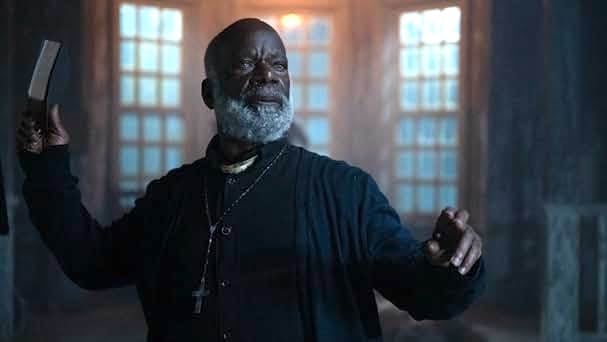In a just society, a comic book about the spawn of an English witch and an archduke of Hell who grows up to be a monster-hunting, Nazi-punching detective would be a worldwide smash. We do not live in that society. We live in one where readers like their heroes squeezed into spandex underoos. Even among dyed-in-the-wool comic devotees, Hellboy, created by Mike Mignola in the early 1990s, remains a popular indie property yet to break out in the mainstream.
Twenty years and a handful of adaptations later, Brian Taylor has taken his turn rolling that popularity boulder uphill with Hellboy: The Crooked Man, Big Red’s fourth live-action appearance with the third actor to play him. This distinction puts Hellboy in company with characters like the Hulk and Spider-Man, sans international recognition. For all the comic’s successes, the world’s greatest paranormal investigator is still an outlier in the comic book movie phenomenon.
Taylor’s approach to The Crooked Man reflects that status. This time around, our crimson-skinned hero’s fate never rises to more importance than a character note. That keeps the scale small and the stakes intimate, but it also means the meager production values are all too obvious.

Ketchup Entertainment
A Hero for the Creator Economy
The Crooked Man is a cheap project, just a few rungs up on the ladder from a YouTube fan film. This is evident from the opening set piece, where Hellboy (Jack Kesy) and Bobbie Jo Song (Adeline Rudolph) set out to deliver a cranky oversized spider to the Bureau for Paranormal Research and Defense. Chekhov’s arachnid breaks free, and one train derailment later, Hellboy and Song wind up stranded in Appalachia’s haunted hills, whose impoverished inhabitants warn them of witches and worse—the Crooked Man (Martin Bassindale), the region’s rapacious local devil. Joined by Tom Ferrell (Jefferson White), who grew up in the area and found it so godawful that fighting in World War II was preferable, Hellboy and Jo determine to get that Crooked Man back in line.
As rough a ride as Hellboy and Song have at the start, the audience’s feels rougher. But no sooner does the sequence end than the rest of The Crooked Man begins in earnest, with a high priority on practical effects, fade-to-black scene transitions that evoke the sensation of flipping a comic’s pages, and Kesy, Song, and Bassindale having a hoot in their leading roles. Tatty as the movie looks, it’s actually—try not to faint—good.

Ketchup Entertainment
From Prestige to Paltry
Getting around Hellboy: The Crooked Man’s shoddiness is key to enjoying what Taylor’s up to here. It’s a direct contrast to Guillermo del Toro’s abundantly detailed Hellboy (2004) and its sequel, 2008’s Hellboy: The Golden Army. You’d think turning a humble profit and earning a nomination for Best Makeup at the 81st Academy Awards would’ve guaranteed a third del Toro Hellboy, but you’d be wrong. (It doesn’t help that del Toro is one of Hollywood’s busiest bees.)
This may partly explain the 11-year gap separating The Golden Army from Neil Marshall’s attempted reboot: Following up del Toro is no one’s idea of fun. 2019’s Hellboy isn’t as wretched as the average Rotten Tomatoes clip claims, but it still falls pitiably short of the del Toro standard. That’s because no one makes movies or considers horror the way he does; nearly every one of his movies is a labor of love for all things monstrous. Stepping into Ron Perlman’s shoes is a tough act, too. The man has a face for Hellboy, down to that magnificent jawline.
But Taylor—who wrote Hellboy: The Crooked Man’s screenplay with Mignola and Christopher Golden—makes enough smart decisions to put the film in its own grungy, personal, low-rent league, right down to the 1950s setting. Taylor’s Hellboy is a younger cambion with brusque bedside manners and a pessimistic worldview; this isn’t the seasoned agent we know from Marshall and del Toro’s films. Where Kesy’s take on the character departs from Perlman and Harbour is his pronounced intolerance for others’ foibles. His Hellboy is kind of a dick! Good thing he’s got a heart of gold.

Ketchup Entertainment
Squashing, Smashing, Shooting
The structure varies, too. Hellboy doesn’t undertake a quest in The Crooked Man, or embark on an adventure. Instead, he has a misadventure in the American middle of nowhere, with a few visions scattered here and there that depict his conception. Beyond that, “destiny” isn’t a factor in Taylor’s narrative. That motif gives the comics an overarching definition, but many a standalone tale stands between Hellboy’s beginning and ending. That’s The Crooked Man’s purpose: a detour on the way to Armageddon, where Taylor piles incident after incident on his cast, pitting them against witches, zombies, snakes, ravens, and the Crooked Man himself, and where Kesy plays Hellboy like a beleaguered blue-collar employee.
Not much rattles him. He’s the type to take it all in, then beat the tar out of whatever “it” is. The blend of gruesome violence, creepy folk horror, and kinetic pacing shaves down a few of the movie’s jagged edges.
So what if he isn’t del Toro? Few of us are. Taylor isn’t Marshall, either, but as he directs The Crooked Man at full throttle, it becomes clear what the three have in common: genuine passion for Hellboy. That’s a trait absent in an overwhelming majority of comic book films made today and yesterday.




